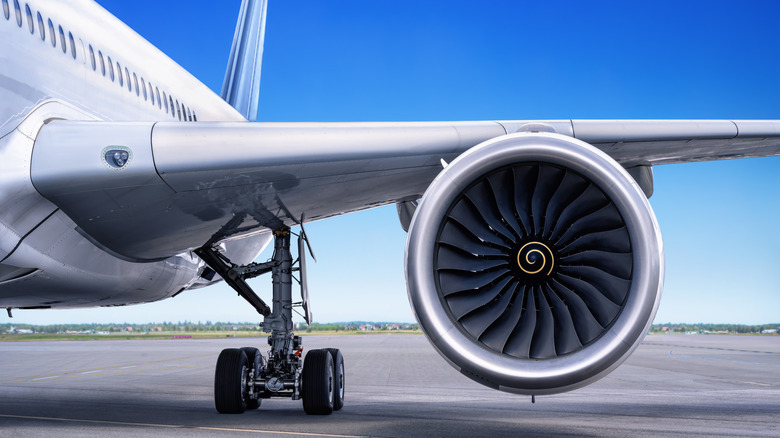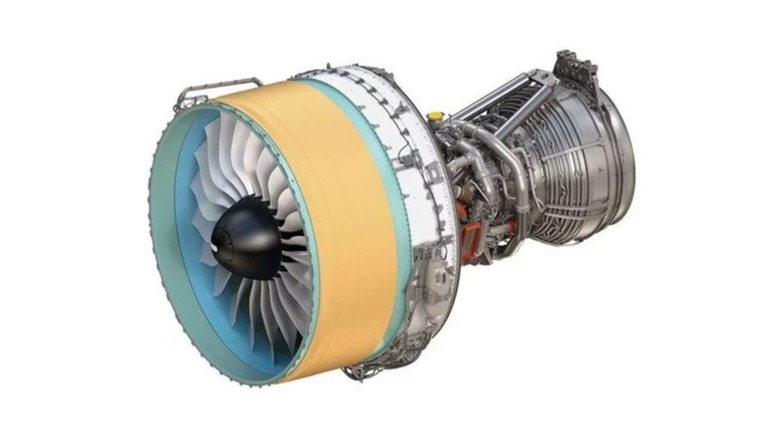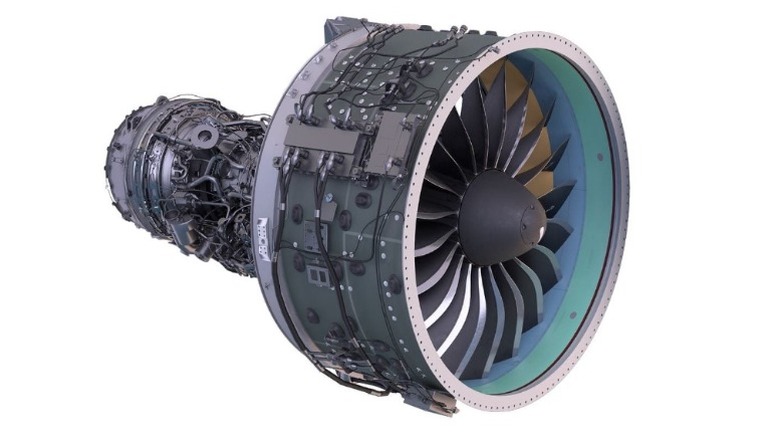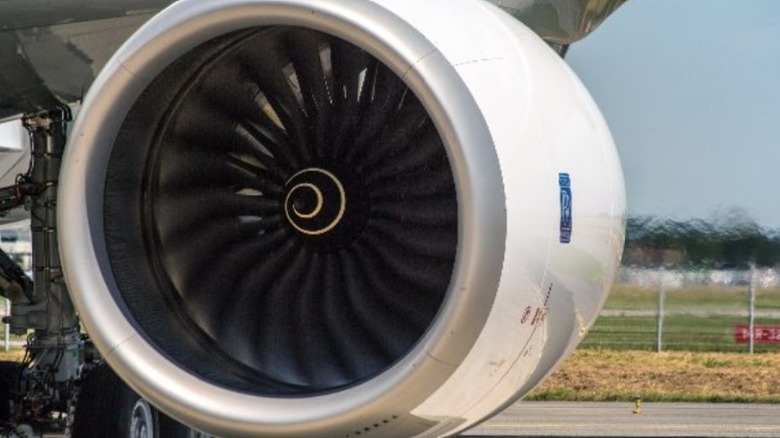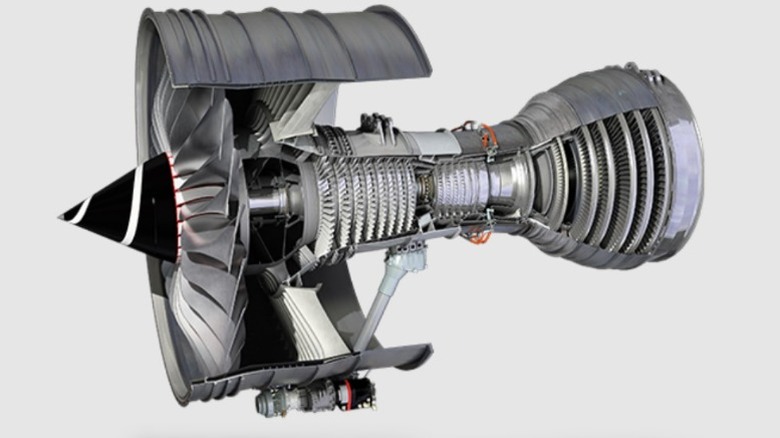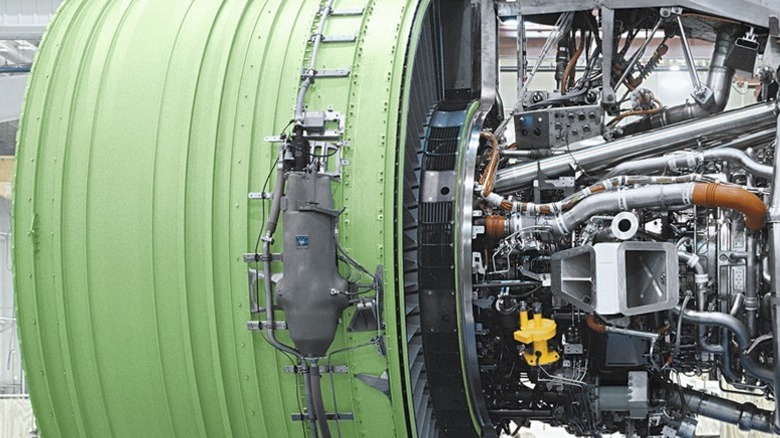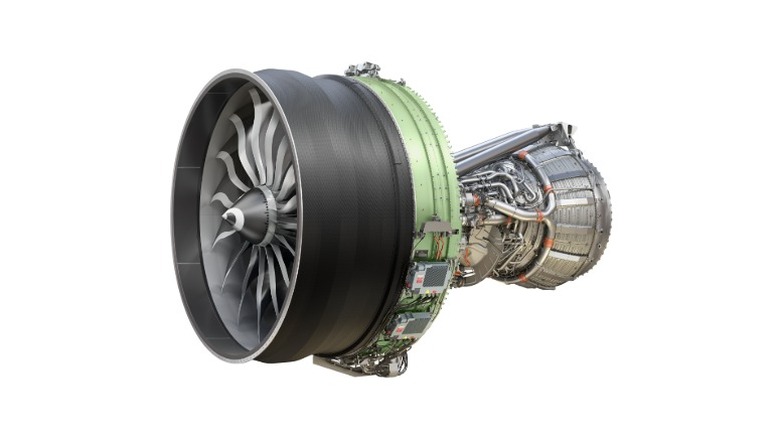8 Of The Most Expensive Jet Engines Ever Made
The best fighter jets in the world cost a fortune. One of the reasons for this is because of the unbelievably high prices of the engines that power these air fighters. The engine has to be meticulously designed with every kind of situation in mind for a jet to be effective in its purpose. Engineers put their heart and soul into preparing them so the jet can achieve maximum air superiority.
In addition, there is no room for slacking off when crafting jet engines. A small negligence can cost the life of the pilot and the passengers, so there have to be zero compromises in terms of their build and quality. Big players in the manufacturing industry, such as Pratt & Whitney, are particularly careful about their engine designs and try to minimize the chances of mid-air accidents to the best of their ability.
They may be expensive, but cutting edge jet engine have one or more features in their construction that distinguish them from low-quality builds, justifying the eye-watering prices.
Why are jet engines expensive?
The costs of jet engines are no joke — and understandably so. Years and years of hard work, effort, and thought are put into crafting a reliable, durable, and efficient engine design that can operate seamlessly with the aircraft. In addition, technology is getting more advanced with each passing day, posing new challenges and threats. Engine designs must be powerful enough to tackle all advancing requirements — and that costs money.
Special superalloys like aluminum and nickel are used in jet engines due to their ability to function under high-pressure and high-temperature conditions. Fetching these superalloys costs a lot since they are priced on the higher side compared to regular metals, adding to the manufacturing cost of the engine. From the fan blades and nozzle designs to the compressor — no component is easy to create. Also, not all countries have the means necessary to manufacture engines locally. So, they must import the units from international manufacturers, driving costs up.
All engines are rigorously tested before they are officially permitted to power the aircraft. Rolls-Royce, for instance, submerges its engines in water, operates them nonstop for thousands of hours, and places the engines in freezing conditions at its GLACIER facility in Manitoba.
Pratt & Whitney F135
Each unit of this turbo engine, created specifically for the Lockheed Martin F-35 Lightning II fighter jets, costs about $15 million. The U.S. Department of Defense (DoD) ordered 518 units in 2023 for a whopping amount of $8 billion. All three variants — A, B and C of this advanced combat fighter are integrated with the 5th generation F135 engine, which results in a total of around 1,300 engines in existence, marking a hallmark of one million flight hours in 2025.
The engine can deliver up to 40,000 pounds of thrust to enable the fighter to slash through dogfight scenarios, escape critical situations, or perform mid-air maneuvers. It has an unmatched full mission capability rate of 94% with a proven safety record. All these core abilities distinguish it from other engines and make it a favorite of U.S. forces.
In 2024, Pratt & Whitney received a $1.3 billion contract to invest in the F135 Engine Core Upgrade to enhance the durability of the design and ease its aircraft integration. An additional $186 million was granted in 2025 by the DoD to support the ECU program and enhance the propulsion capabilities of this engine.
Engine Alliance GP7000
Developed in collaboration between GE Aerospace and Pratt & Whitney, this engine powers the Airbus A380, the world's largest passenger aircraft. There are certain characteristics specifically integrated into this engine to make it suitable for wide-body passenger aircraft, like low fuel consumption, lower noise emissions, and a remarkable 81,500 pounds of thrust. Plus, it has a lightweight build — 13,400 pounds — to offset the A380's considerable mass.
In 2002, Emirates bought 88 units of the GP7000 engine for the Airbus A380 aircraft, paying $1.5 billion — approximately $17 million each. There were 573 GP7000 engines in function toward the end of 2019. However, the production of this turbofan engine took a hit in 2021 when Airbus discontinued A380s.
Despite that, the GP7000 engine is still powering the existing A380s has achieved more than one million hours flight time. It is recognized for being a reliable engine, with a departure reliability rate of 99.9%.
Rolls-Royce Trent 1000
The Trent 1000 is designed and optimised for the unique Boeing 787 Dreamliner, causing the aircraft to be 20% more efficient than its predecessor, the Boeing 767. The engine, priced at $20 million, features a 2.8 m diameter fan that is responsible for delivering 85% of the total thrust. Paired with this, the HP turbine and an adaptive HP cooling system improve the cooling capabilities of the engine and lower the fuel consumption rate while not compromising on the thrust and fuel efficiency.
Low noise generation is another quality of the Trent 1000. Also, the engine has ice protection, thanks to a heated Engine Section Stator (ESS) system that lets the plane cruise through cold or high-moisture conditions without putting extra burden on the engine.
Despite its capabilities, the Trent 1000 engine has experienced maintenance issues. In 2024, Rolls Royce CEO Tufan Erginbilgic told Bloomberg, "By the end of next year, we will have a very competitive product and then we are going to push that product because it's a very good product." The company began a Durability Enhancement package for the Trent 1000, focusing on a re-engineered high-pressure turbine blade, along with other features that will contribute to added durability. In 2025, Rolls Royce successfully completed the certification testing of a new upgrade aimed at handling durability complaints.
Pratt & Whitney PW1100
These engines are settled into the Airbus A320neo family of aircraft, enabling 24,000 to 33,000 pounds of thrust. In 2024, the Willis Lease Finance Corporation purchased 15 Pratt & Whitney PW1100 for $363.9 million — about $24.26 million each.
Things took an unfortunate turn for P&W when the European Aviation Safety Agency sent out an emergency airworthiness directive following in-flight engine shutdown. As a result, the manufacturers officially acknowledged the concerns with the engine design — particularly its knife-edge seal, resulting in a temporary production halt and recall of the affected in-service engines.
After fixing the issue and resuming production, the PW1100 engines were back on the market in 2025 after receiving certification from the U.S. Federal Aviation Administration (FAA). There have been consistent improvements in the maintenance output of PW1100, rising 30% in 2025.
Rolls-Royce Trent XWB-84
This powerful engine is built for the Airbus A350 fleet. Considered among the most efficient large aero-engines, this beauty costs an estimated $35 million. The 68 HP turbine blades generate a massive amount of horsepower and a thrust of 84,000 pound-force. The Trent XWB powers to the Airbus A350, which is regarded as one of the best planes for long flights. Singapore Airlines uses one for its Singapore to Newark route, which is the longest commercial flight in the world at 17 hours and 52 minutes nonstop.
Sustainability has been a core focus of this design. The Trent XWB engineers carefully designed it to be a sustainable choice for airliners by incorporating lower fuel burn and carbon dioxide emission properties. Moreover, this popular engine has been on track to receive a new upgrade that will further improve fuel efficiency and CO₂ emissions by 1%. Expected to enter service in 2025, the upgrade will improve this wide-body engine's standing even further in the market.
Time and time again, Emirates has shown continued confidence in the durability and reliability of the Trent XWB-84 by ordering 50 of them in 2019 and a further 15 in 2023. Consequently, the engine has flown for over 15 million hours.
Rolls-Royce Trent 900
In 2015, Emirates concluded a deal with Rolls-Royce to acquire 217 units of Trent 900 to power 50 Airbus A380s — each of them costing just over $42 million. Since then, the fourth member of the Trent family has marked significant records.
The engine is constructed with an aerodynamic design and the latest technology, like the 24 fan blades that make the fan less prone to the shockwaves experienced mid-air. In addition, it has a unique fan containment system and a contra-rotating HP system that contributes to higher fuel efficiency. As a result, the A380 maintains the record for the lowest lifetime fuel burn.
The engine has an advanced cooling system that lets it survive even the harshest of heat situations, plus the lightweight design makes it a good pick for the Airbus A380 — the world's heaviest airliner. A great thrust force is needed to push such a massive aircraft. Fortunately, the Trent 900 delivers an exceptional thrust of 70,000 to 77,000 pounds, so the jet can cruise through the clouds with ease.
General Electric GE90
The GE90 dates back to 1995 when it made its flight debut in a Boeing 777. Since then, the engine has only enhanced in abilities and superiority. To call this a powerful engine would be an understatement. The greatest ever thrust force produced by this mighty engine is 127,900 pound-force in 2002 — a record that held for almost 15 years.
Newer variants of this engine, like the GE90-115B, came with even more advanced compressor, combustor, and turbine systems to lower the fuel burn rate by 3.6% and achieving a hallmark reliability rate of 99.98%. The GE90 has more notable success points, such as being the first engine to have carbon-fiber composite fan blades, certifying for Extended-range Twin-engine Operational Performance Standards (ETOPS) and also the first program to use analytics-based maintenance that strengthens the understanding of a plane's operation in terms of precision and accuracy.
In 2002, Pakistan International Airlines acquired eight GE90s for its Boeing 777 fleet for around $400 million. It took GE Aerospace several years and over a billion dollars to develop this masterpiece engine. There are more than 2,800 GE90s in service worldwide, accumulating over 100 million flight hours.
General Electric GE9X
The largest and most powerful commercial aircraft engine ever built, the GE9X costs over $70 million. The engine was made to power the new Boeing 777X family of aircraft. It set a new Guinness World Record for the highest thrust of 134,300 pounds.
General Electric has gone above and beyond with this one-of-a-kind design. The GE9X improved fuel efficiency and has 16 fan blades that contribute to quieter operation and lower fuel burn. The 27:1 compressor pressure ratio is also the highest ever seen in any engine before.
Moreover, GE ensured that this engine was ready to take on the most critical conditions by putting it through an intense testing period of about 5,000 hours that consisted of 72 test flights. Because the engine was introduced very recently in the market, the manufacturers began to integrate it into the Boeing 777Xs in 2019.
